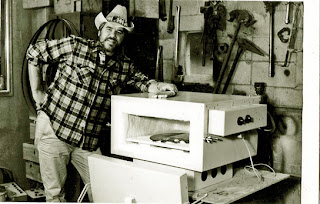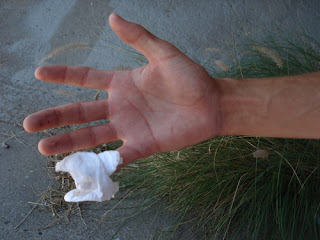>
.jpg) |
| Ray Ahlgren, Dan Schwoerer, Boyce Lundstrom |
Boyce Lundstrom, a true iconic legend in glass fusing history, passed away this week of brain cancer. This is a huge loss to the fusing world. Boyce was an innovator, author and glass craftsman and a founding member of modern fusing. He had written many books on glass – his book “Kiln Firing Glass, Glass Fusing Book One” is referred to by many fusers as the “bible” for fusing process. In 1974, three self-described “hippie glassblowers” (Dan Schwoerer and Ray Ahlgren and Boyce Lundstrom) started the Bullseye Glass Company. Boyce later sold his interest in that company to his partner in 1985, then created a glass school called Camp Colton, outside of Portland, Oregon.
 |
| Boyce at the Fusing Ranch |
In 2004, Boyce said of his work in the late 1970’s as he was developing the technology and practice of fused glass: “My enthusiasm for fusing demanded endless experimentation and my endeavors soon caught the attention of a number of glass artists who became, along with me, pioneers of a sort. Our work, our workshop, and the push to spread the word about glass fusing somehow became known as the Fusing Ranch.”
In recent years Boyce has continued to experiment with new and rewarding ways to play with glass. He has published three new books (2010-2012), each covering one area of exploration and providing several projects to assist the reader in undertaking a new method or material.
He also taught classes as a guest teacher in studios across America and hosted seminars in his Oceanside, California studio.
In his passing, we celebrate the craftsman, pioneer, educator, scientist, artist, man.

